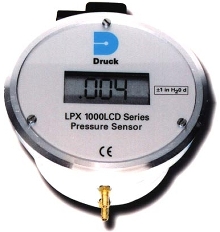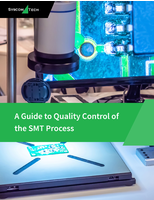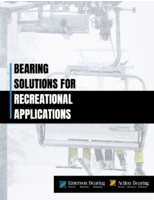Pressure Transmitter suits HVAC monitoring and control.
Share:
Press Release Summary:
 LPX 1000LCD wet/wet differential pressure transmitter is available in 2 diameters, allowing installation directly into existing mechanical gauge applications. It offers standard accuracy of 0.5% FS, and standard ranges of ±0.1 to ±6 in. H2O, 2-wire, 4-20mA output. Excitation voltage is 15 to 30 Vdc. Damping adjustment feature allows user to slow response time to eliminate nuisance trips of alarms when doors are opened and closed.
LPX 1000LCD wet/wet differential pressure transmitter is available in 2 diameters, allowing installation directly into existing mechanical gauge applications. It offers standard accuracy of 0.5% FS, and standard ranges of ±0.1 to ±6 in. H2O, 2-wire, 4-20mA output. Excitation voltage is 15 to 30 Vdc. Damping adjustment feature allows user to slow response time to eliminate nuisance trips of alarms when doors are opened and closed.Original Press Release:
LPX 1000LCD Series Wet/Wet Differential Pressure Transmitter
Druck Incorporated is pleased to announce the LPX l000LCD Series, a new wet/wet differential pressure transmitter ideally suited for replacement of mechanical gauges used in clean room HVAC monitoring and control. The LPX l000LCD is available in two diameters, allowing installation directly into existing mechanical gauge applications. The large LCD display provides a convenient local readout.
The sensor utilizes Druck's proprietary variable inductance technology, which has been field-proven in thousands of applications. Standard accuracy is 0.5% FS with improved accuracy available. Standard ranges are ±0.1 to ±6 inH2O, 2-wire, 4-20mA output. Excitation voltage is 15-30 Vdc. The LPX 1000LCD Series is available in gauge or differential pressure, unidirection or bidirectional operations.
The LPX 1000LCD offers a dramatic improvement in reliability with improved stability and the ability to tolerate condensing atmospheres such as those encountered in animal enclosures. The design has been field proven for more than 10 years in applications where high humidity and condensing atmospheres are daily occurrences. The damping adjustment feature allows the user to slow the response time to eliminate nuisance trips of alarms when doors are opened and closed. For applications where the transmitter will be installed in one of the pressure zones,
the LPX 1000LCD is available in a wet/wet gauge pressure configuration where the second pressure port is eliminated, venting the sensor directly to the atmosphere.




